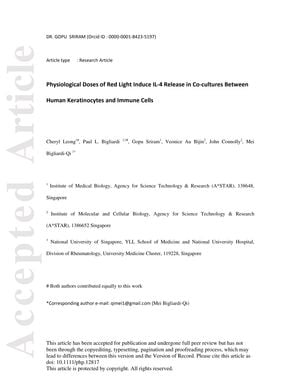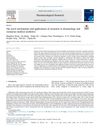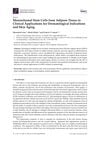Physiological Doses of Red Light Induce IL-4 Release in Cocultures Between Human Keratinocytes and Immune Cells
August 2017
in “
Photochemistry and Photobiology
”

TLDR Red light at 627 nm can safely trigger IL-4 release in skin cells, potentially helping treat inflammatory skin conditions.
In the 2017 study, researchers discovered that red light at 627 nm prompted the release of IL-4 from co-cultures of human keratinocytes and immune cells without requiring a photosensitizer. This effect was unique to red light, as other wavelengths did not elicit the same cytokine release. The study also found that IL-4 treatment resulted in epidermal thickening and a delay in keratinocyte differentiation, which could be relevant for treating skin conditions such as atopic dermatitis. Red light did not cause significant cell death or photo-oxidative damage, suggesting it could be a safer alternative for photo-immunotherapy. The findings support the potential use of red light in treating inflammatory skin disorders and conditions like alopecia, due to its ability to modulate immune responses and affect skin cell behavior without significant adverse effects. The number of participants or samples used in the study was not mentioned in the summary provided.





